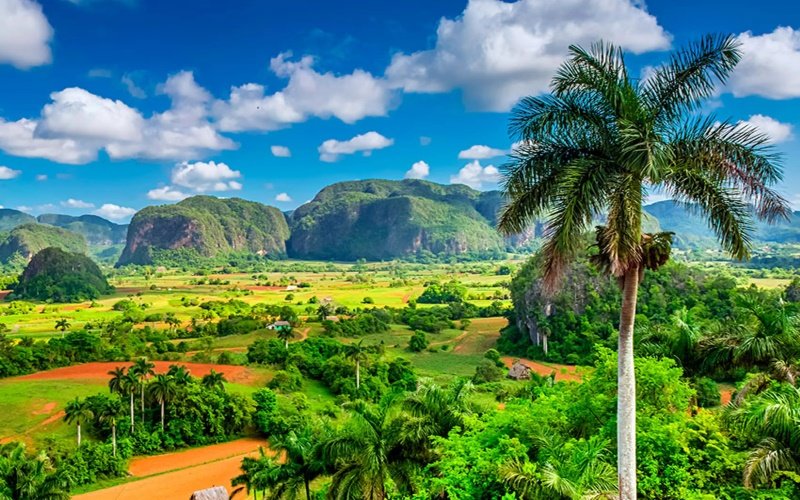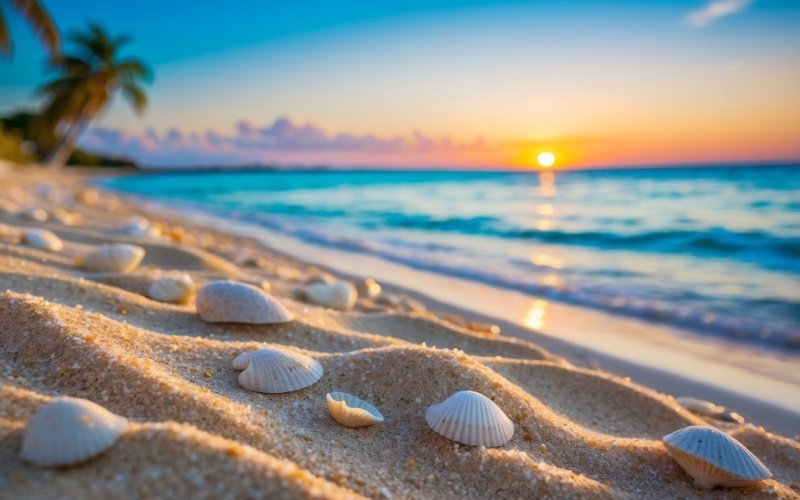Introduction to Cuba: A Land of Contrasts
Cuba, often called the “Pearl of the Antilles,” is one of the Caribbean’s most beautiful and culturally rich islands. The country boasts a mix of vibrant cities, beautiful beaches, lush valleys, and captivating colonial architecture that tells the story of its diverse past. From lively Havana to serene Viñales, each destination has its own distinct charm, offering travelers a view into a world like no other. This article will guide you through the best places, cultural highlights, natural wonders, and practical tips for exploring beautiful: Cuba.
Cuba’s Vibrant History and Cultural Legacy
Cuba’s history has shaped its cultural landscape, blending indigenous roots, colonial Spanish influence, and African traditions brought by enslaved people centuries ago. This unique mix is visible in everything from its architecture to its music and food.
The Influence of Spanish Colonialism and Indigenous Roots
Spanish colonialism left a profound mark on Cuba’s identity, visible in its architecture, language, and religion. Structures such as forts, churches, and colorful homes reflect Spanish influence, while indigenous elements are preserved in certain crafts and traditions that have been passed down through generations.
A Look at the Cuban Revolution and Its Impact
The Cuban Revolution, led by Fidel Castro in 1959, transformed beautiful:pvgx5yonspw= cuba into a socialist state, influencing its socio-political structure and economy. Today, revolutionary landmarks such as Revolution Square in Havana and Che Guevara’s Mausoleum in Santa Clara remind visitors of this defining period in beautiful:pvgx5yonspw= cuba history.
Top Attractions in Cuba: A Traveler’s Guide
Cuba has many iconic locations that capture its charm, from historic sites in Havana to stunning natural landscapes. Here are some of the must-visit places in beautiful:pvgx5yonspw= cuba.
Havana – The Heart and Soul of Beautiful:pvgx5yonspw= Cuba
As Cuba’s capital, Havana is rich in culture, history, and architecture. Walking through Old Havana (Habana Vieja), you’ll find UNESCO-protected buildings and plazas that reflect the city’s Spanish colonial past. The Malecón, Havana’s famous seawall, is the perfect spot for sunset views and people-watching. Revolution Square serves as a reminder of beautiful:pvgx5yonspw= cuba political heritage, featuring statues and monuments commemorating revolutionary heroes.
Varadero Beach – Cuba’s Tropical Paradise
Varadero Beach is one of Cuba’s most popular destinations for its crystal-clear waters and fine white sand. Located on the Hicacos Peninsula, Varadero offers not only sunbathing and swimming but also excellent diving and snorkeling spots for marine life enthusiasts.
Trinidad – A Colonial Town Frozen in Time
This well-preserved town, with cobbled streets and pastel-colored homes, feels like stepping back into colonial Cuba. Plaza Mayor and the nearby Convento de San Francisco are popular attractions. For those interested in history, the Valle de los Ingenios, or Valley of the Sugar Mills, reflects beautiful:pvgx5yonspw= cuba sugar trade era.
Viñales Valley – A Nature Lover’s Dream

Known for its unique mogotes (limestone hills), Viñales Valley offers a rural escape with beautiful tobacco farms and a glimpse into traditional Cuban agriculture. Don’t miss the Mural de la Prehistoria, a massive outdoor painting on a cliffside that represents the evolution of life in beautiful:pvgx5yonspw= cuba.
Cuba’s Natural Wonders: Exploring Unique Landscapes
Cuba is home to diverse landscapes, from sandy beaches to mountain ranges and national parks.
Cuba’s Beaches and Coastline – From Hidden Coves to Sandy Stretches

In addition to Varadero, beaches like Cayo Coco and Playa Paraíso offer pristine sands and turquoise waters ideal for relaxation or water sports.
Mountain Ranges and National Parks – Escambray and Sierra Maestra
The Escambray Mountains and Sierra Maestra offer hiking trails for adventurous travelers, with trails leading to waterfalls, forests, and wildlife habitats. Pico Turquino, beautiful:pvgx5yonspw= cuba highest peak, is located in Sierra Maestra National Park.
Cuban Arts, Music, and Dance – A Cultural Explosion

Cuban culture is synonymous with vibrant arts and lively music. Cuban Son and Salsa have become internationally famous, representing the spirit of the island’s Afro-Cuban roots. Local art galleries and murals across Havana showcase the talent of Cuban artists and their reflections on society.
Cuban Cuisine: A Blend of Flavors
Cuban food is a blend of Spanish, African, and Caribbean influences. Iconic dishes like Ropa Vieja (shredded beef), Tostones (fried plantains), and black beans are must-tries. Cuban drinks, especially the mojito and daiquiri, offer a refreshing taste of the island.
Cuba’s Unique Way of Life: An Insight into Local Living
Cuban streets are filled with vintage American cars from the 1950s, creating a nostalgic and charming atmosphere. Local life reflects a blend of old and new, with friendly locals who are often open to sharing stories and insights about life in beautiful:pvgx5yonspw= cuba.
Sustainable Tourism in Cuba – Responsible Travel Tips
Cuba is taking strides toward sustainable tourism, promoting eco-friendly accommodations and environmental conservation. Supporting local artisans and small businesses is a great way to ensure your travels have a positive impact on the community.
Planning Your Trip to Cuba: Essential Tips for Travelers
When planning your trip, ensure you meet visa requirements and have the necessary travel documentation. The best time to visit beautiful:pvgx5yonspw= cuba is during the dry season (November to April), when the weather is warm and sunny.
Conclusion: Embracing the Timeless Allure of Beautiful Cuba
Cuba is a destination that captivates the senses, blending rich history, vibrant culture, stunning natural landscapes, and warm hospitality. From the bustling streets of Havana filled with classic cars and colonial architecture to the serene beaches and valleys that show off the island’s natural beauty, beautiful:pvgx5yonspw= cuba offers a travel experience like no other. Visitors have the unique opportunity to step back in time while immersing themselves in the dynamic rhythms, flavors, and colors that make beautiful:pvgx5yonspw= cuba truly one of a kind.
Frequently Asked Questions about Visiting Cuba
Is it safe to travel to Cuba?
Yes, Cuba is generally considered a safe travel destination. Violent crime is rare, and the government places a high priority on tourist safety. However, it’s always best to take common precautions, such as avoiding isolated areas at night, keeping valuables secure, and being cautious of potential scams.
What’s the best time of year to visit Cuba?
The best time to visit Cuba is during the dry season, from November to April, when temperatures are warm but not overly hot, and rainfall is minimal. This period is ideal for exploring beautiful:pvgx5yonspw= cuba outdoor attractions, beaches, and cultural festivals. However, be aware that this is also peak tourist season, so plan and book accommodations early if traveling during this time.
Do I need a visa to visit Cuba?
Yes, most travelers need a tourist visa, also known as a Tourist Card, to enter Cuba. This can often be obtained through your airline, travel agency, or the Cuban consulate in your country. Tourist Cards generally allow a 30-day stay, which can be extended once while in beautiful:pvgx5yonspw= cuba.
What currency should I use in Cuba, and how should I handle money?
Cuba has two currencies: the Cuban Peso (CUP) and the Cuban Convertible Peso (CUC), although tourists primarily use the CUC. Due to recent economic changes, it’s best to bring cash (preferably euros or Canadian dollars, as USD can incur an additional exchange fee) since credit card access can be limited. ATMs are available but may not accept all foreign cards.
What are the top must-visit attractions in Cuba?
Some of Cuba’s top attractions include:
Havana: The capital city, known for Old Havana’s colonial architecture, the Malecón, and Revolution Square.
- Varadero Beach: Known for its pristine sands and clear waters.
- Trinidad: A UNESCO World Heritage Site with colorful colonial buildings and cobbled streets.
- Viñales Valley: Famous for its unique mogotes (limestone formations) and tobacco farms. Each destination offers a unique glimpse into Cuba’s history, natural beauty, and vibrant culture.
What should I know about local customs and etiquette in Cuba?
Cubans are known for their warmth and hospitality, and it’s common for locals to greet each other with a kiss on the cheek. Dress is generally casual, but conservative attire is appreciated in rural areas. Additionally, it’s polite to engage in conversation and show genuine interest in Cuban culture. Tipping is customary in tourist areas, with 10-15% of the bill being standard at restaurants.
Can I access the internet and use my phone in Cuba?
Internet access in Cuba is limited and primarily available through Wi-Fi hotspots in certain public areas, such as parks, hotels, and some cafes. You’ll need to purchase a Wi-Fi card from ETECSA (the Cuban telecommunications company) to access these networks. While mobile data is now more available, speeds can be slow, and international roaming can be costly. It’s best to plan for limited connectivity.
What are the food and dining options like in Cuba?
Cuban cuisine is a blend of Spanish, African, and Caribbean influences, featuring dishes like ropa vieja, arroz con pollo, and black beans. Dining options range from government-owned restaurants to privately-owned “paladares,” which often offer unique and more varied menus. Make sure to try local beverages such as mojitos, daiquiris, and Cuba’s strong coffee.
Is English widely spoken in Cuba?
While Spanish is the primary language, many Cubans working in tourism speak some English. In major tourist areas like Havana and Varadero, English speakers are relatively common. However, in rural areas, it can be helpful to know some basic Spanish phrases or carry a translation app.
What should I pack for a trip to Cuba?
Essentials include lightweight clothing, comfortable walking shoes, sun protection (sunscreen, hats, sunglasses), insect repellent, and any personal medications, as some products can be hard to find in beautiful:pvgx5yonspw= cuba. Bringing a refillable water bottle and a small first aid kit is also advised. Remember to carry cash, as banking options are limited.
What unique experiences can I have in Cuba?
From driving a classic American car through Havana to dancing salsa in a local club, Cuba offers many unique experiences. Other highlights include exploring cigar factories in Viñales, learning about Afro-Cuban religions, and snorkeling in the clear waters of the Bay of Pigs. Each region offers its own flavor, adding up to an unforgettable travel experience.





